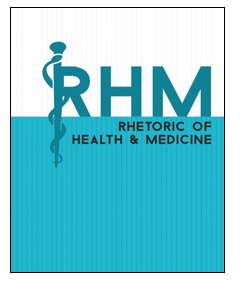Articles
Book review: Bounding biomedicine: Evidence and rhetoric in the new science of alternative medicine
Blake Scott
Date posted: March 2020
A Review of Bounding Biomedicine: Evidence and Rhetoric in the New Science of Alternative Medicine
J. Blake Scott
Bounding Biomedicine: Evidence and Rhetoric in the New Science of Alternative Medicine. By Colleen Derkatch. Chicago, IL: University of Chicago Press, 2016. 238 pages. $55 cloth; $10 e-book.
Related images

Book review: Rhetorical work in emergency medical services: Communicating in the unpredictable workplace
Marissa McKinley
Date posted: March 2020
A Review of Rhetorical Work in Emergency Medical Services: Communicating in the Unpredictable Workplace
Marissa C. McKinley
Rhetorical Work in Emergency Medical Services: Communicating in the Unpredictable Workplace. By Elizabeth L. Angeli. New York, NY: Routledge, 2019. 204 pages, $47.95 paper, $23.98 e-book.
Related images

RHM Author Interview (Youtube video): Cassandra (Casi) Kearney, Ph.D., author of “Mass Shootings and Mental Health: A Historical Perspective on the ‘Mental Illness as Motive’ Narrative”
Cathryn Molloy and Erin Trauth
Date posted: May 2020
RHM Author Interview (Youtube video): Cassandra (Casi) Kearney, Ph.D., author of “Mass Shootings and Mental Health: A Historical Perspective on the ‘Mental Illness as Motive’ Narrative”
In an effort to better understand the historical significance of the "mental illness as motive" narrative, this essay investigates what has been recognized as the first mass shooting in the modern United States--Howard Unruh's 1949 mass shooting in Camden, New Jersey. Given that mass shootings were an unprecedented phenomenon, the news media played an important role in explaining the event. As will be shown, many Americans felt uncertain about how mental illness manifested and who was vulnerable. Given the often undisclosed, albeit perceived threat of schizophrenia, the public needed reassurance that there would be some indicator of insanity. Accordingly, the media used evidence of religious fanaticism and unfavorable physical descriptions of Unruh to cast him as separate, outside, or an "other." Ultimately, the media's rhetorical choices differentiated Unruh and attempted to make mental illness easier to identify for an audience afraid of its influence.
Topic: rhetoric, gun violence, media, othering


